The fascinating work of Cressida Campbell – Part 1
I had the very good fortune to go to a wonderful art exhibition at the National Gallery of Australia (NGA) whilst I was on a short holiday in Canberra, Australia’s capital city.
It was a retrospective on the work of Cressida Campbell, who is a significant contemporary artist in woodblocking and printmaking.
Her work is beautiful in its own right, but when you come to understand the minute, laborious and time-consuming processes involved, you can really appreciate the uniqueness of what she does. It really does have to be seen to be believed.
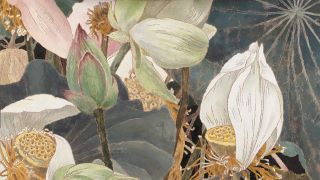
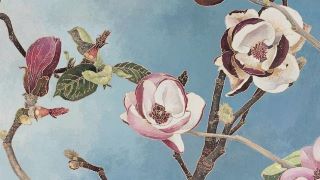
At the exhibition there is a wonderful video where Cressida demonstrates the process she goes through. The technique she has developed over years of refinement results in two unique artworks – a single painted and engraved woodblock, and just one woodblock print on paper, which is the mirror image of the painted woodblock.
She was introduced to the woodblock technique by her art teacher, and then further studied the ukiyo-e woodblock techniques of Japanese masters such as Yoshida and Kitagawa Utamaro while studying at the Yoshida Hanga Academy in Tokyo in 1985. She has since spent years refining the traditional Japanese woodblock printing techniques into her own unique process.
She begins with a detailed line drawing on a plywood board, then she traces the drawing with a fine engraving tool, very much like a dentist’s drill, to create a single-use woodblock engraving. She then carefully paints it with thick layers of watercolour, almost ‘colouring in’ her carved line drawing. When this process is complete, the entire board is delicately sprayed with water, and special print paper is then overlayed on top. Cressida then uses a hand roller to transfer the painted image on the board to the paper.
She will then roll back sections of the paper and re-spray the board with water and re-roll the paper over it multiple times until she is happy with the print. She says that she do this a number of times over a number of hours till she is satisfied with the print result.

Here are some views of her work at the sketching and painting stages of working with the plywood block.
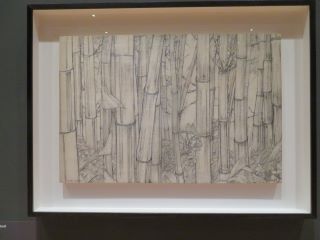
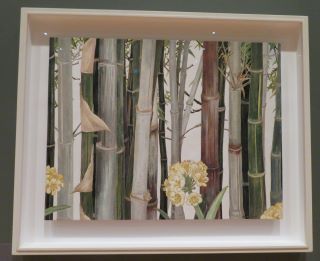
Below, you can see how the finished plywood woodblock is mounted and framed, in these examples at the exhibition.
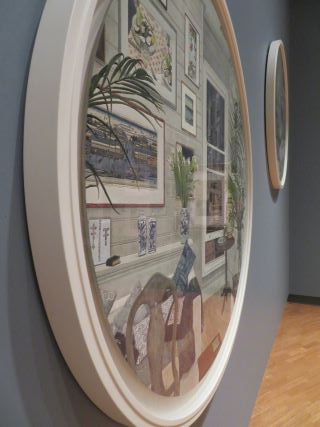
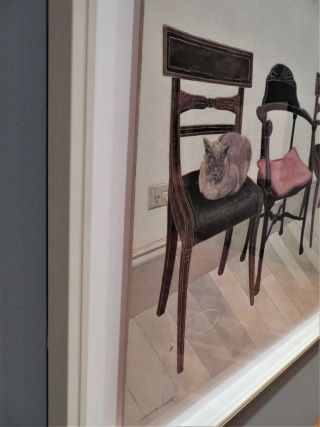
Cressida spends a lot of time working up a colour palette for each work. She uses very fine sable brushes, and yards and yards of Winsor & Newton Cotman watercolour paint, evidence of which was demonstrated for us in a cabinet at the exhibition!
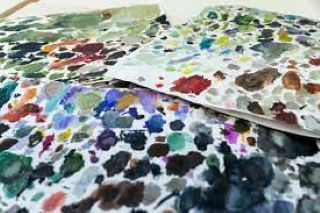
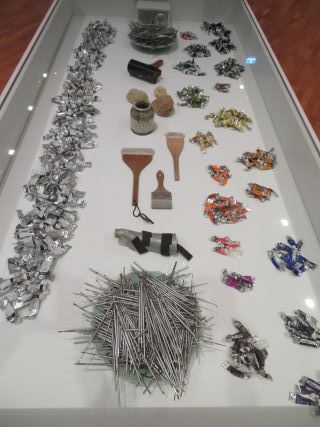
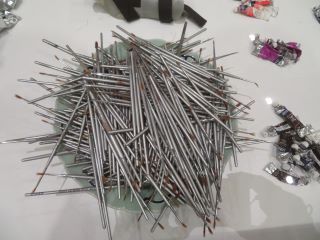
It’s a painstaking process, with each work taking anywhere from two weeks to four months to complete. Here is an example of the end result. This is a scene of her cat, Otto, on the stairs. The print on the right is a mirror image of the woodblock on the left.
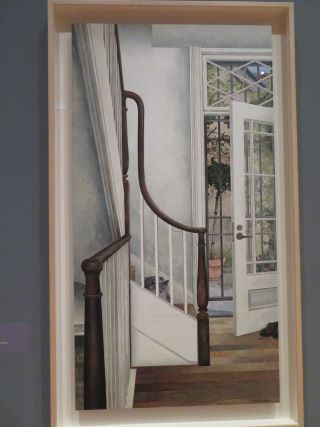
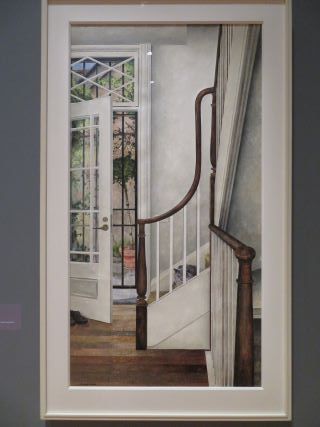
Cressida says in the video that people often ask her why she doesn’t just paint watercolours directly onto paper, and not put herself through the physical, laborious process she goes through. She answers that there is something very satisfying about the overall process which appeals to her. It is exciting to see the print unfold as she peels back the paper from the painted woodblock.
And certainly, the effects that Cressida manages to achieve are unlike anything else.
Here is another example of one of her woodblocks and single prints (mirror images of each other).
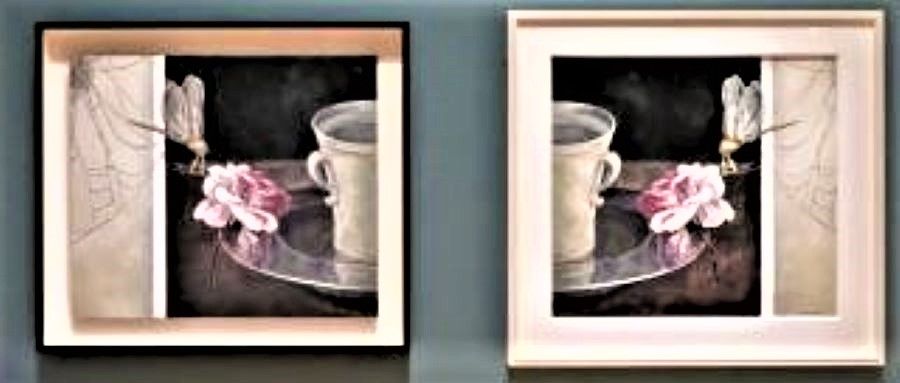
You can see in my close up photo, below, the fine detail of the dragonfly’s wing in the etched woodblock (taken from the picture on the left above):
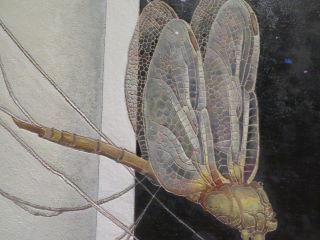
And isn’t the blending of colours in the flower to create depth and shadows on the glass plate just incredible?
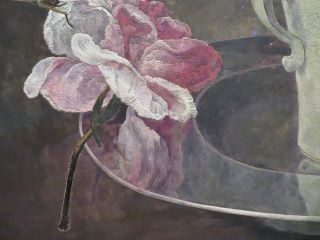
One of Cressida’s mantras is that she must paint objects and scenes which mean something to her. This is evident in her still life arrangements of flowers, vases and kitchen utensils (a similar philosophy and style to that of her great friend Margaret Olley, who we have featured on the blog numerous times before (you can search for her name using the little magnifying glass search at the top right of the blog page).
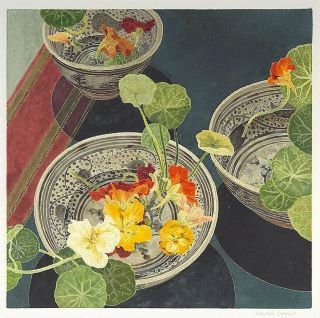
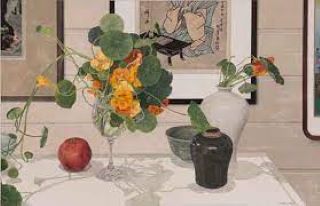
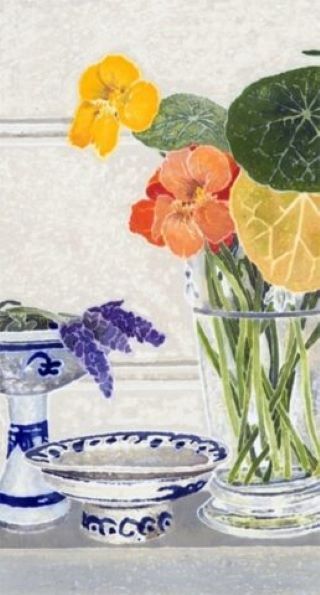
But Cressida doesn’t only work in still life creations.
She also produces landscapes of the Australian bush, as well as working city and harbour scenes, and scenes within her own home.
Tomorrow we will return to look at more of Cressida’s bushland, harbour and city scenes, as well as learn a little bit more about her as a person.
